Historically, people have chosen Aso Oke for significant life events such as weddings, chieftaincy ceremonies, and other festive occasions. Beyond its cultural significance, artisans sustainably produce the fabric, following a practice passed down through generations, with its essence remaining virtually unchanged.
There are three main types of Aso Oke, each with its distinct characteristics:
Before getting into the intricate process of how Aso Oke is made, it’s essential to understand what it is and its cultural significance. Aso Oke which translates to “Top Cloth,” is also known as ‘Aso Ofi’ and it originates from the Yoruba people of southwestern Nigeria.
We weave Sanyan from the silk of the African Anaphe worm and cotton yarns, giving it its signature carton brown color. This variety is one of the original and most revered forms of this fabric, traditionally made from domestic wild raw silk. Before modern technology, creating Sanyan required the collection of thousands of moth cocoons, carefully unravelling their silk yarns to spin into thread.
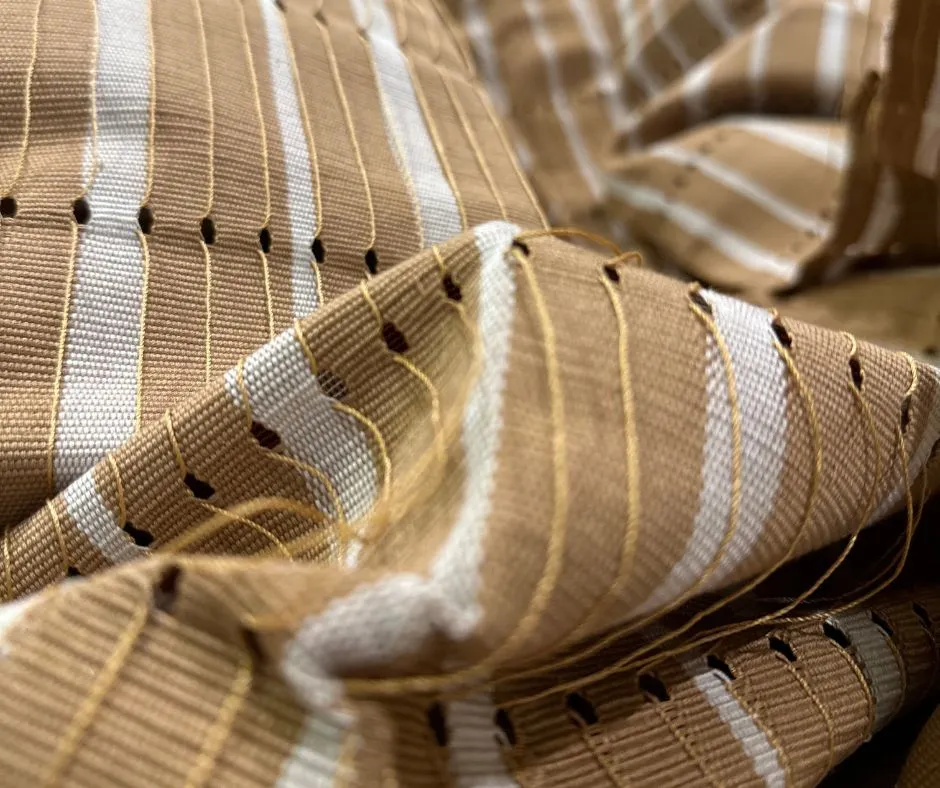
We weave Alaari with either synthetically grown cotton or shiny threads, which gives it a distinctive glossy finish. This type is popular for its vibrant and eye-catching appearance, often used in celebratory attire.

Typically indigo-colored with tiny stripes of various colors, we weave Etu to be valued for its simplicity and style. Consequently, this style of fabric is often chosen for its understated elegance.

In today’s Nigerian market, producers commonly make modern versions of this fabric from imported polycotton threads, using colors that mimic those originally derived from raw silk. However, the essence of these traditional varieties remains intact, reflecting the heritage and craftsmanship of the Yoruba people.
At Woven Market Africa, we take pride in producing this iconic fabric while also preserving the rich tradition and artistry behind it. As the leading producer of this elegant fabric in Nigeria, we aim to educate, inspire, and invite you to experience its beauty, woven with heritage and sustainability. In this post, we will explore how cotton Aso Oke is traditionally made.
Creating this sustainable fabric involves an intricate process with several meticulous steps:
The process begins in the fields where we handpick cotton. We meticulously extract the seeds by hand using a simple method involving a wooden block and an iron rod. This traditional technique ensures that nothing goes to waste. We set aside the cotton fibers for spinning while preserving the seeds for future planting. Thus, this cycle of use and reuse serves as a cornerstone of Aso Oke’s sustainability.
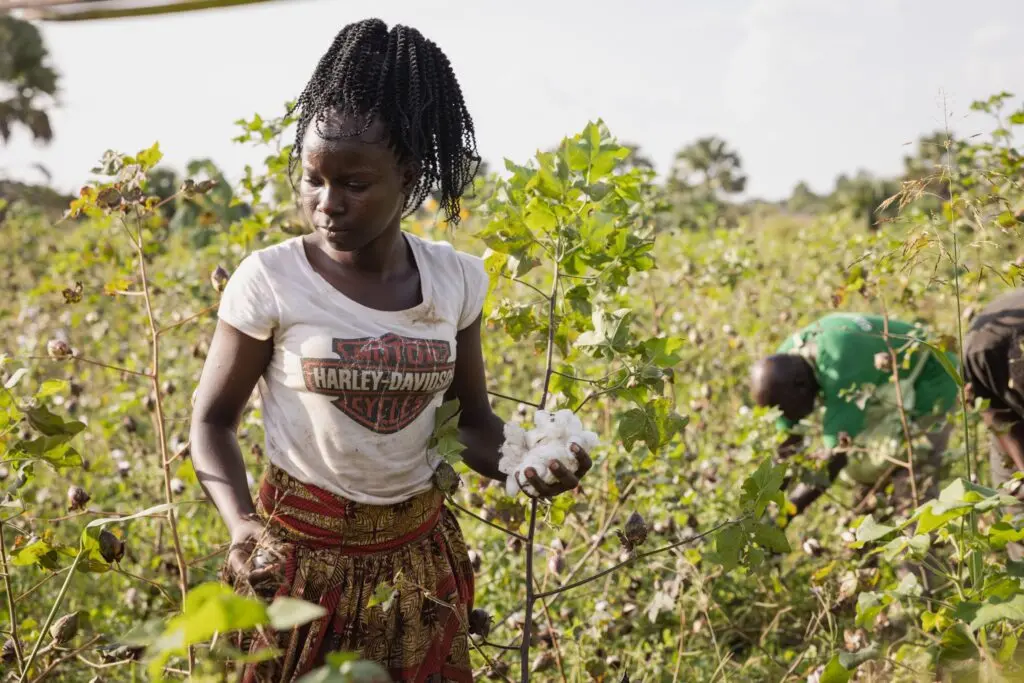
Next, we spin the cotton using a locally made spindle known as “Orun.” As we turn the spindle, it rotates the cotton fibers into fine threads. Afterward, we sort these threads, carefully removing dirt and impurities to ensure the highest quality.
Following this, we can either use the thread in its natural, creamish-white form or dye it to create the vibrant and significant colors for which Aso Oke is renowned.
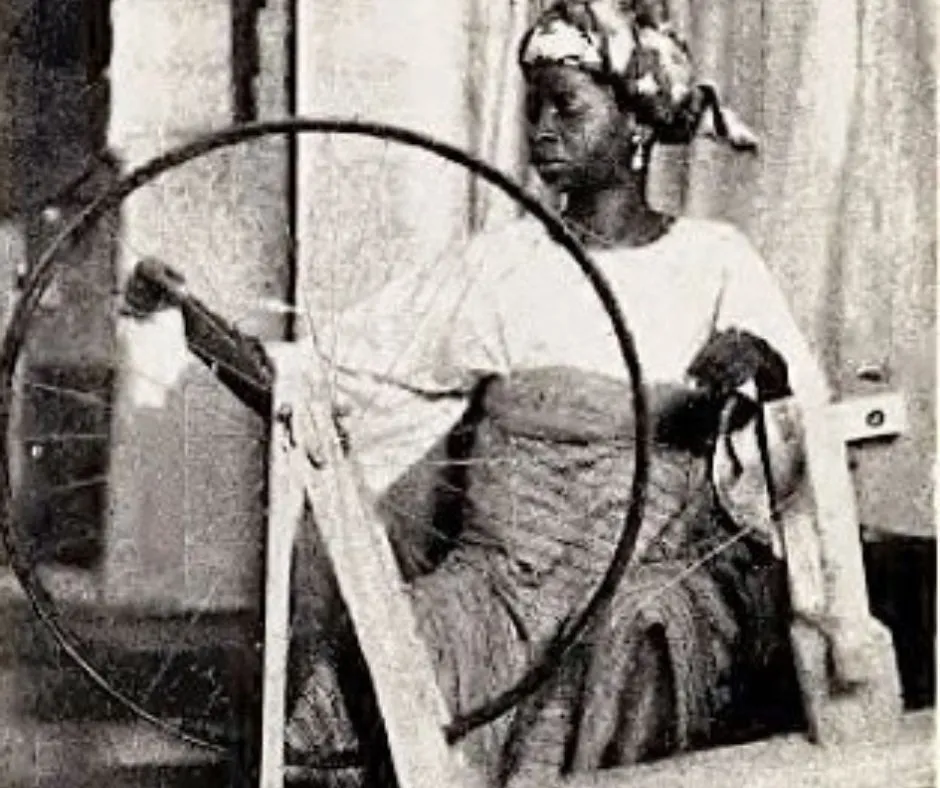
We prepare the yarn for weaving next. Artisans meticulously arrange the yarn on a loom, aligning the threads for precise weaving. As a result, this task typically takes between 2 to 4 hours.
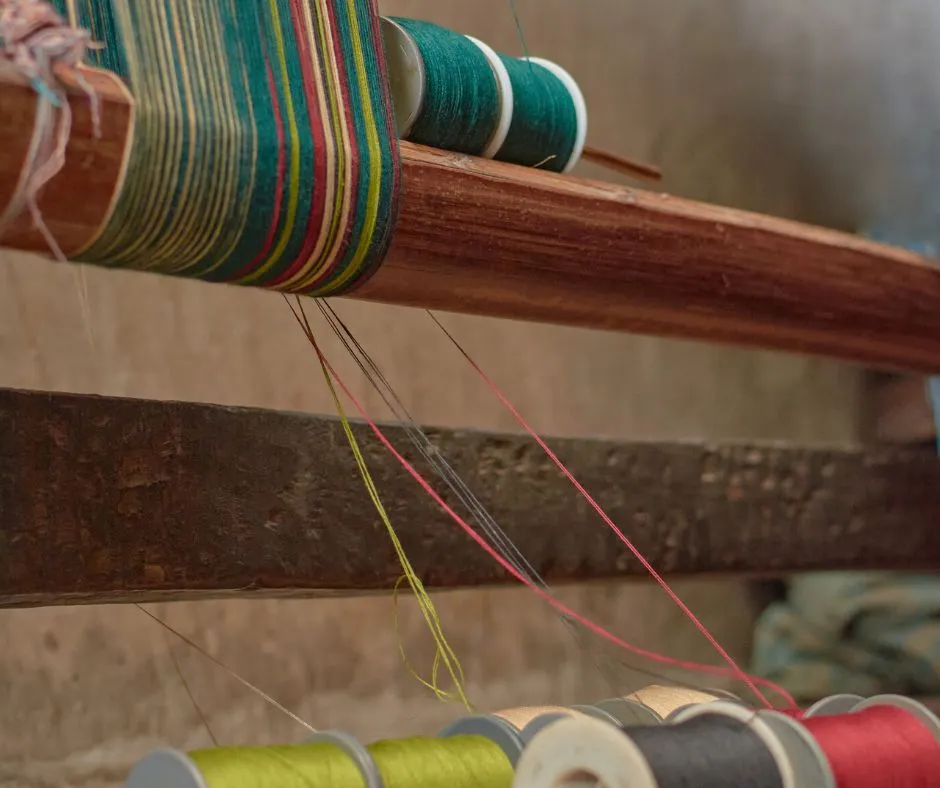
We pass the loom, the heart of the weaving process, down through generations. In traditional weaving, we use two main types of looms: women use the upright single heddle loom, while men use the horizontal double heddle loom. Each loom offers different capabilities, enabling a variety of widths, patterns, and designs.
After preparing the thread, we can either use it in its natural, creamish-white form or dye it to create the vibrant and significant colors for which the fabric is renowned.
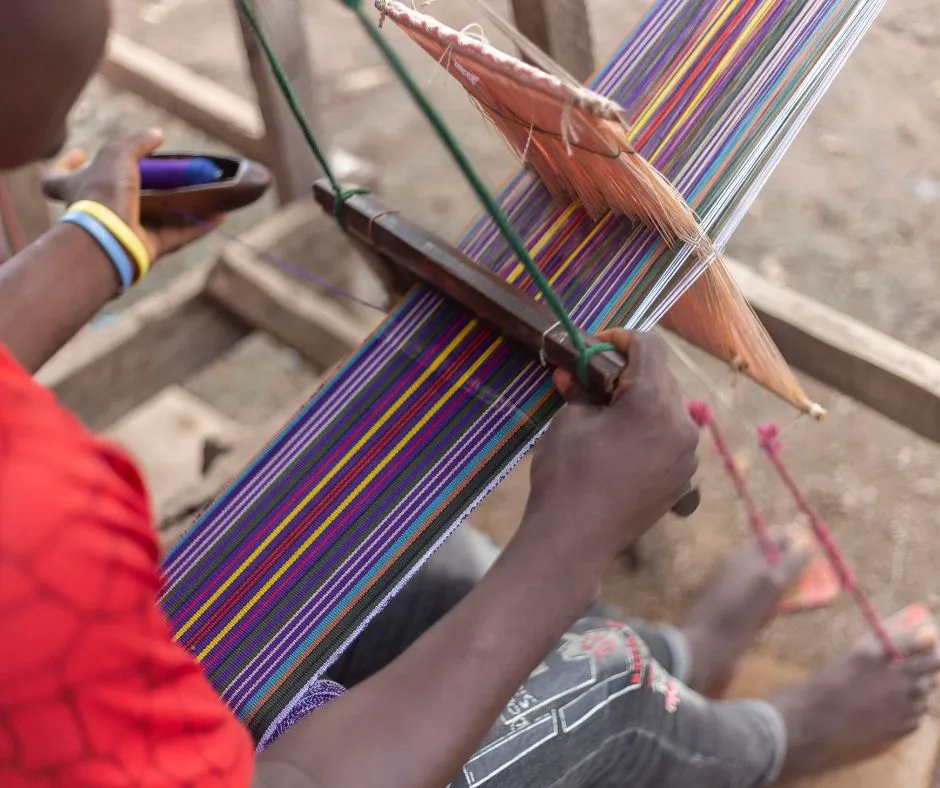
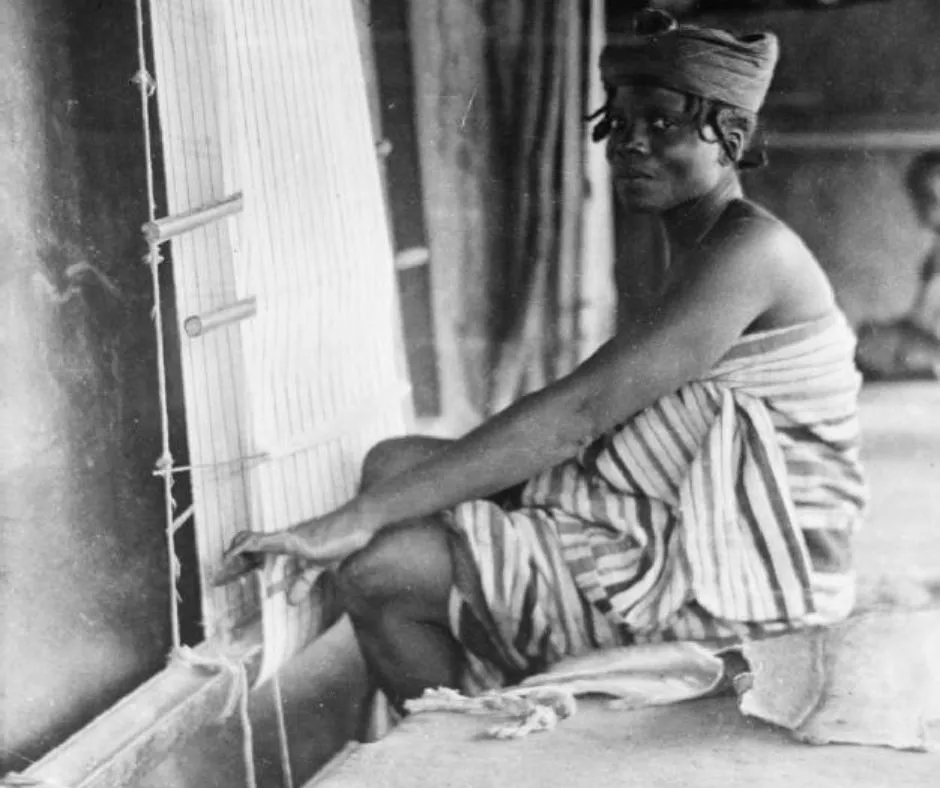
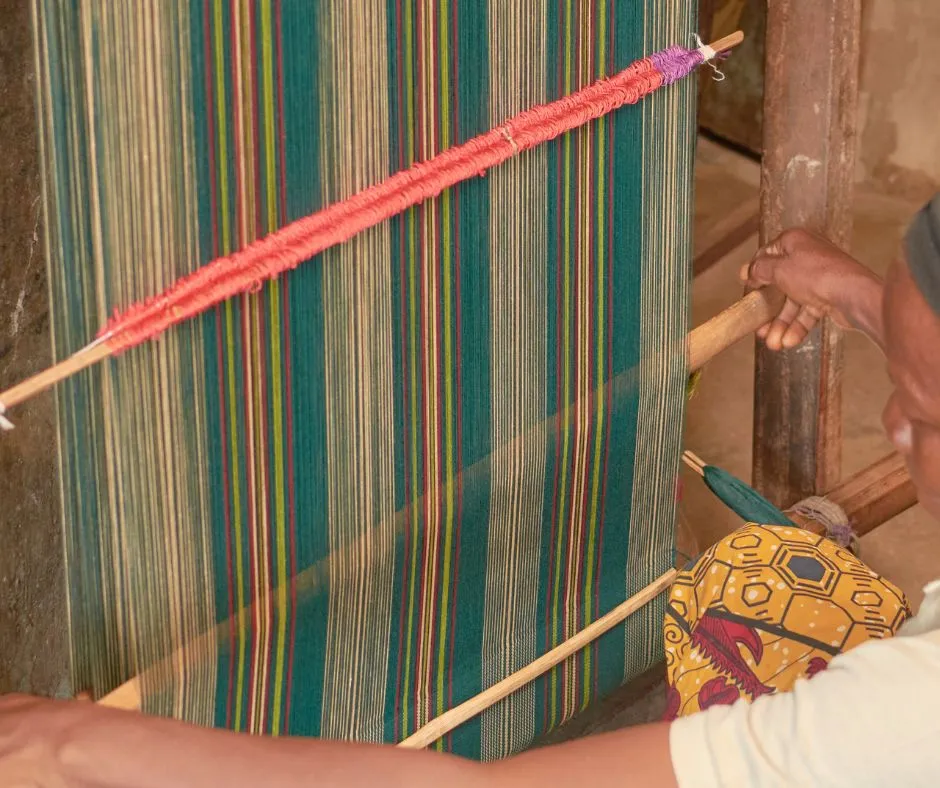
Skilled weavers use handlooms to create intricate patterns by interlacing yarn. This step requires considerable time, with each strip of fabric taking days or even weeks to complete.
In the weaving process, weavers interlace warp (vertical) and weft (horizontal) threads at right angles to form the fabric. They use a shuttle to pass the weft threads through the warp, carefully following a predetermined pattern. Consequently, the fabric displays a stunning, intricate design that showcases the weaver’s skill and highlights the cultural significance of the fabric.
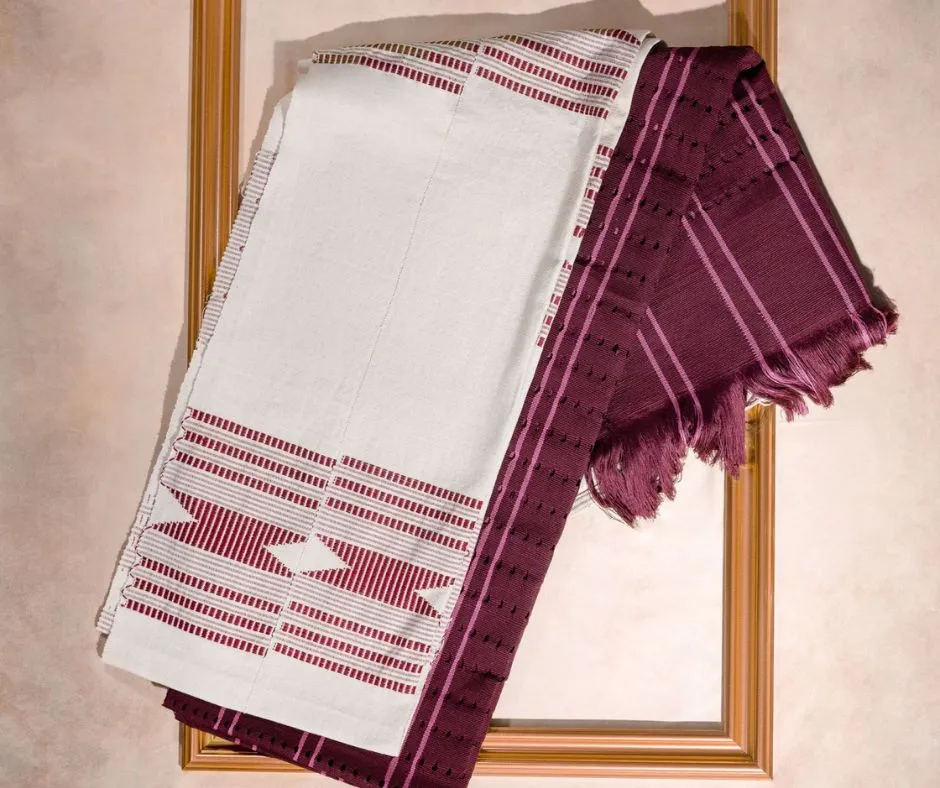
Artisans root every step of the Aso Oke making process, from cotton seed extraction to the final weaving, in eco-friendly practices. They use natural materials, hand-spin yarn, and rely on manual weaving techniques to ensure minimal energy consumption, making it one of the most sustainable fabrics available.
This beautiful fabric’s durability further enhances its sustainability. Unlike mass-produced textiles that wear out quickly, this fabric is made to last and is often passed down through generations. In a world dominated by fast fashion, it offers a timeless alternative that values quality, craftsmanship, and environmental responsibility.
At Woven Market Africa, we are committed to preserving the tradition of this treasures Nigerian fabric while embracing innovation. Our weavers masterfully combine traditional techniques with modern designs to create fabrics that are both timeless and contemporary.
We are proud to be the custodians of this legacy, bringing you the finest fabrics that honour tradition, support sustainability, and inspire future generations.
Subscribe now for more unique content and updates.